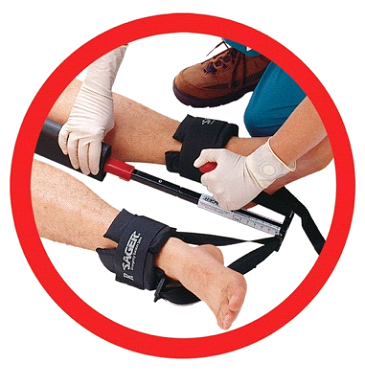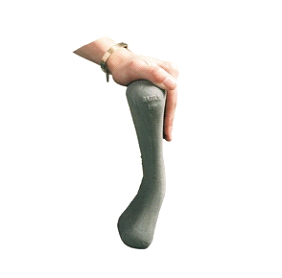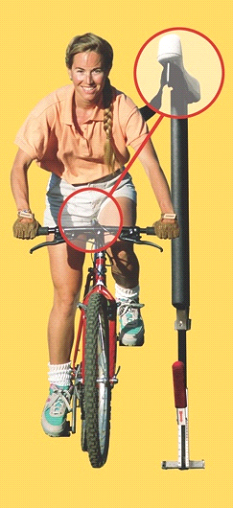Indications and Contraindications,
Sager Facts, Cleaning Instructions
Indications and contraindications for the use of traction splints on femoral fractures.
A fracture of the Pelvis occurring with a fracture of the Femur is generally a contraindication for the use of a traction splint of any type. A Sager® Emergency Traction Splint is not contraindicated when MAST Trousers are used to immobilize the fractured Pelvis. In this situation, Sager® Splints may be applied over MAST Trousers if treatment of the fractured Femur is indicated or desired. Sager’s traction is quantifiable and gentle and will not disrupt or move Pelvic bones immobilized by MAST Trousers. Supracondylar fractures of the distal end of the Femur are contraindicated because traction can cause anterior rotation of the distal bone fragment – forcing the sharp fractured bone end down into the Popliteal Artery and Nerve. These fractures should be splinted as found. Compound fractures of the Femur with bone fragments sticking through the skin may be a contraindication. Guidelines by local protocol or instructions by a Medical Consultant should be followed. Fractures of the Ankle and Foot are also contraindicated. Pressure from the ankle harness and from traction is not therapeutic. The indications and contraindications listed above are only intended as a basic reference tool. Please defer to federal, state, and/or local protocol for definitive analysis and guidelines. Warning: All Operators should receive full and proper initial and refresher instruction sessions from a qualified person on detailed use of this equipment and regarding the particular situations in which it should be used.
How much traction should I apply?
Apply the amount of traction recommended by your medical consultant, or that required by protocol. For adults, the American Academy of Orthopedic Surgeons recommends gentle traction to a maximum of 7kg (15 pounds) per fractured femur (14kg (30 pounds) for a bilateral fracture. A general rule of thumb is 10% of the patient’s body weight per fractured femur. For example; if a patient weighing 45kg (100 pounds) has a single fracture, the appropriate amount of traction would be 41⁄2kg (10 pounds). If that same person has a bilateral fracture, 9kg (20 pounds) would be estimated.

Articulating Base and Cushion
Sager Form III splints have an articulating base and cushion (the saddle) which bends laterally for seating and exacting conformance to the ischial tuberosity. With a Sager® Form III Splint, most perineal examinations and procedures can be performed with the splint in place – without compromising the comfort and safety of the patient. Sager® Splints have a well-padded shaft cushion which provides additional comfort and stability.
Comfort
How comfortable are Sager® Splints against male and female genitalia? The ischial perineal cushion of the splint rests against the ischial tuberosity and with natural genital mobility the male genitalia can be checked and moved to ensure it is not under any pressure. During actual accident situations the clothing should be opened, cut and/or removed during the general assessment procedures. In practice trials, loose clothing should be worn to enable genital mobility. (Note: the structures used and pressed on are the same as sitting on a bicycle seat).
Cleaning Instructions
Software Goods and Stainless Steel: Manu-Klenz1 (i.e. Sodium Dodecylbenzine Sulfonate and Coconut Diethylthanolamide). Effective manual washing of heavily soiled washable surfaces, medical instruments, counters, glass and plastic surfaces.
Directions: 1 ounce Manu-Klenz to 1 gallon water.
Stainless Steel: 70% Alcohol solution or above instructions.
Foam Rubber: Precise2 Hospital Foam Cleanser/Disinfectant.
1,2 Or other comparable product




